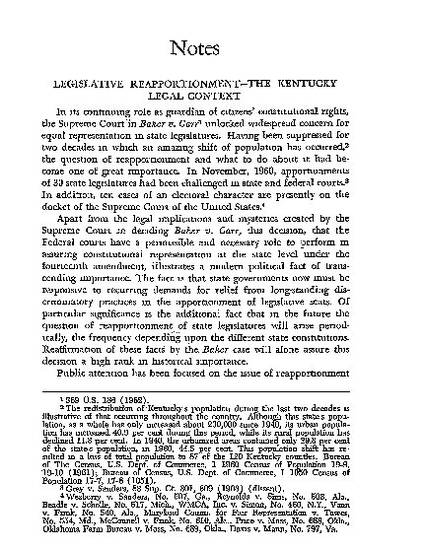
In its continuing role as guardian of citizens’ constitutional rights, the Supreme Court in Baker v. Carr unlocked widespread concern for equal representation in state legislatures. Having been suppressed for two decades in which an amazing shift of population has occurred, the question of reapportionment and what to do about it had become one of great importance. In November, 1960, apportionments of 30 state legislatures had been challenged in state and federal courts. In addition, ten cases of an electoral character are presently on the docket of the Supreme Court of the United States.
Apart from the legal implications and mysteries created by the Supreme Court in deciding Baker v. Carr, this decision, that the Federal courts have a permissible and necessary role to perform in assuring constitutional representation at the state level under the fourteenth amendment, illustrates a modern political fact of transcending importance. The fact is that state governments now must be responsive to recurring demands for relief from long-standing discriminatory practices in the apportionment of legislative seats. Of particular significance is the additional fact that in the future the question of reapportionment of state legislatures will arise periodically, the frequency depending upon the different state constitutions. Reaffirmation of these facts by the. Baker case will alone assure this decision a high rank in historical importance.
Public attention has been focused on the issue of reapportionment through the press, greatly accelerating the prospect of relief from grossly disproportionate representation in all states. And no state is completely immune to this rapidly developing public question: How must the state legislature be reapportioned to comply with the equal protection clause of the fourteenth amendment? Treating this question as it relates to Kentucky, this note, in its first two parts, explains briefly the Baker case and the Kentucky legal history of reapportionment. The third and fourth parts are concerned with the requirements of the Kentucky constitution and the known meanings of the fourteenth amendment as it is now being defined.

Kentucky Law Journal, Vol. 51, No. 4 (1962-1963), pp. 722-736